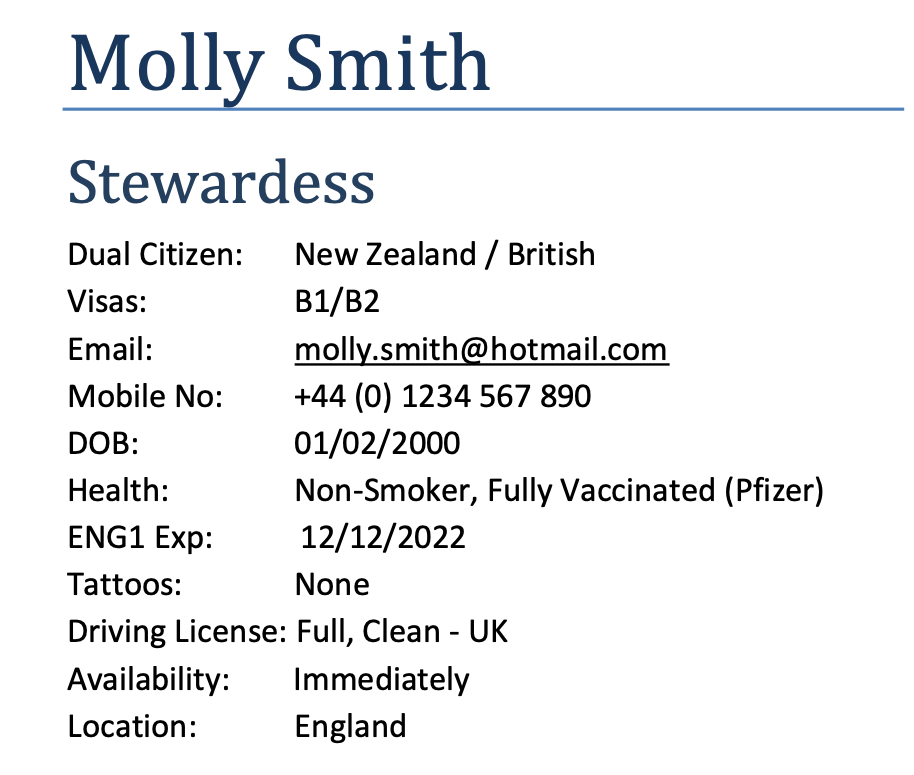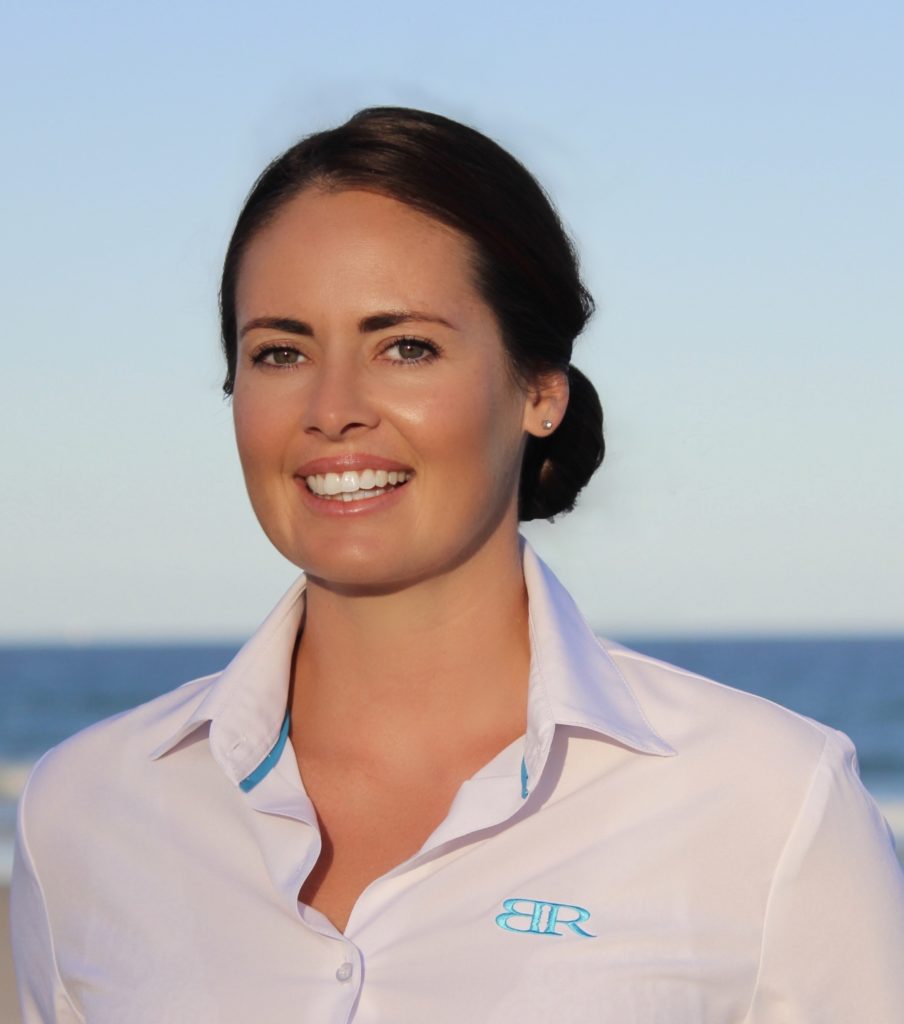gimme!
7 Ways To Nail Your First 7 Days As A Yacht Stew.
Freebie alert: Junior Stews Download now
Blog Categories
superyacht jobs
stew tips
LIFE ONBOARD
ABOUT YACHTING
listen now!
Hear about the real yacht life, info on how to kickstart your superyacht career and tips on becoming a super stew.
The Seaworthy Stew: Podcast
A Chief Stew with 6+ years experience in the superyacht industry. I help aspiring crew confidently land their first job and teach the skills needed to be a stand out YACHT STEW.
Hey, I'm Jess
How To Write A Yachting CV
Your Yachting CV is most likely the first point of contact a superyacht has with you. Therefore, putting together the Perfect Yachting CV is essential. After all, it’s your personal sales pitch to the Captain or Head Of Department looking to hire you!
A Yachting CV differs significantly from a land-based CV. It features maritime jargon, qualifications, and a photo. As well as this, it also requires a particular layout that needs to tick the relevant ‘industry standard’ boxes. Imagine a Captain or Chief Stew has 150 CV’s on their desk. If your CV doesn’t look like a Yachting CV, it’s probably going straight to the shredder. It needs to look the part!
Below I have created a simple step-by-step guide providing all you need to create a perfect, professional yachting CV AND If you need some help with this check out my course – The Yachting CV Toolkit. It’s a comprehensive guide which includes 3 x CV templates, a full CV review and all the information on how to piece together your CV from land to sea to make sure you have the best chance at scoring your dream yacht job.
1. Primary Information
Start by filling in all primary information within the top half of the page, including your phone number, email, date of birth and nationality (Do not include your passport number!). Also include your health status (if you’re COVID vaccinated), marital status, driver’s license, your current location and availability.
- Phone numbers: I recommend having a local sim card when you are in an area to ensure a boat can contact you at any time. WhatsApp is extensively used within the industry. Therefore I recommend getting a WhatsApp number. Once you are in the industry, you will most likely have various international sim cards. It’s a good idea to keep one consistent WhatsApp number. Then, use the local number you may have at the time for phone calls and data.
- Email: If your email isn’t professional sounding (e.g. rubytherockstar@hotmail.com), create a new one.
- Location: Ensure this is kept up to date, as captains will use this location to work out your flight paths and travel arrangements when you secure a job.

2. Qualifications
Here you will need to separate your maritime qualifications (mandatorily required certificates) and other qualifications to avoid clutter.
For your Maritime Certifications such as STCW, PDSD and Food Hygiene Level 2, add the expiry dates or the year of completing them if an expiry date is not applicable.
If you have other relevant qualifications, you can create another heading and include certificates such as University Degrees or Diplomas, Post Graduate Education, PADI or SCUBA (Dive Certifications), Carpentry or Electrician (Deck related only), Floristry course, Mixology or Wine Courses.
3. Work Experience and your transferable skills
In this section, you need to list your land-based and/or yachting experience. If you’re green, you will need to pull apart all your land-based work experiences, highlighting the duties/skills that could be transferable to the yachting industry.
If you have worked in restaurants, hotels, events or the aviation or cruise ship industry, this is all highly transferable to yachting. It is essential to pull out any key skills and include them under your type of experience, such as Hospitality Experience or Other Experience. It is not necessary to write all aspects of the job. Choose the duties that are the most relevant to your desired yachting role. From here, you can further break down and add relatable skills to help explain your background and what you’re capable of.
Once you have day work experience, you can add this to your ‘Yachting Experience’ heading, including all of the key duties you had and the time you were on board.
If you have Yachting Experience, highlight everything unique about your position and the direct responsibilities you had. Then you need to back up these with examples as proof. For example, instead of writing you have ‘Wine Knowledge’ you need to think about how you used this skill. It may have been a food and wine pairing menu for charter guests, here you SHOW OFF your talent’s with a practical example. Think about what your working highlights were whilst onboard. What did you LOVE to do? Maybe you have been setting up themed nights and planning events such as beach BBQs.
For your yachting experience, we should write it as per the below:
- MM YY – MM YY M/Y NAME, 80 M OCEANCO • 2200GT – STEWARDESS
- Followed by a paragraph about the position (This format also applies to any day work experience).
4. Hobbies
Your hobbies should be a brief paragraph where you can add a few quirky things, outdoor activities, and water-sport activities. If you’re aiming for an interior role, you can add something creative if it suits you (do not put socialising).
It’s a good idea to look at transferring your hobbies into skills. As the hobbies section is an excellent place to put secondary skills superyachts may look for. For example, you may have on your CV that you’re into photography and filming. They could turn this into taking crew profile pictures, creating a guest charter and welcome videos.
It is not uncommon for charter boats to request crew to have additional skills that guests may find interesting or helpful. It allows charter brokers to sell a yacht having valuable crew skills such as kite-surfing or a pilates teacher onboard. These skills are also usually listed under your crew profile in the boat’s Welcome booklet.
5. The Perfect Yachting CV Personal Profile
This section is one of the LAST steps as it ties together all your experience and skills. It’s also the most important paragraph of your CV and should be six sentences or less and sit right below your primary information.
Your Personal Profile is where you persuade the reader to carry on looking at your CV. Your profile should concisely and effectively display who you are, your skills and strengths relevant to the role and the experience to back it up. Therefore, I recommend saving this key paragraph to last as it’s a summary and the hook, line and sinker as to why you are fit for the job.
I suggest splitting your profile into three sections:
- What are you searching for?
- Who you are
- What can you offer?
Bullet point things you might mention under each section, then list the qualities that position you as the ideal person for the job.
If you’re green for the ‘what you’re searching for’ section, I suggest broadening this statement. For example:
“I aim to secure a position as a yacht stewardess/deckhand/chef/engineer position on a motor or sailing yacht.”
You want to avoid being too picky with what you want based on no experience yet.
When you are writing what you can offer, you need to know what you can bring to the table that is unique? You can use a mix of hard and soft skills to position yourself as well-rounded. Last, back up your skills with evidence. Don’t just add ‘attention to detail’. You need to give an example of this.
6. References
Put down a minimum of three references you can rely on to have positive things to say about you. Ensure their information is current when writing on your CV and structure it so the most recent reference is at the top with correct contact details as they will no doubt be checked.
7. Your CV Headshot
Your photo is a really important part of your CV. It needs to show you are professional, smiling and looking the part. This means you will need to dress in a white polo shirt or white blouse (ironed) and ideally have a background of yachts in the distance or water. If you can’t take a picture in these environments, a plain white background is ok. TIP: When you are taking your photo, have your shoulders back and put your hands behind you as it helps to stand up tall, also face into the sun (at the perfect time in the day), so you don’t have shadows on your face. Natural makeup and neat hair are best for females. For males, ensure you are well-groomed.

Other important yachting CV rules to follow:
- Your CV should be no longer than two pages
- Font sizes should be between 10.5 and 12
- Correctly labelled and saved as:
NAME SURNAME CV
- Send your CV as a PDF document to a yacht or PDF and .doc to yacht crew agents
- Make sure there are NO Spelling and grammar errors
- List certificates and experience in reverse chronological order
A yachting CV can be the difference between you getting a job and being overlooked among a sea full of other candidates. If you need some help, check out The Yachting CV Toolkit. It’s a comprehensive toolkit that gives you everything you need to create a professional Yachting CV that ticks the industry boxes, and stands out from the rest. It includes:
- Three CV Templates;
- How to recognise the transferable skills from your land-based jobs and apply them to your new CV;
- How to use power words to communicate your message firmly and confidently;
- The secret personal profile formula;
- Advice on how to create the perfect CV headshot (no fancy equipment required!)
- And a full CV review.
Get the Yachting CV Toolkit
Built by yacht crew, for yacht crew—CV templates that get you hired.
Don’t let your CV hold you back. The Yachting CV Toolkit gives you all the tools, templates, and insider tips to confidently apply for your first stew job and stand out from the crowd. It also includes a full CV review- grab the Yachting CV Toolkit now.
This article was originally posted on Superyacht Contents page to see the article click here
INSTA
follow
listen to the podcast
contact
BLOG
about
After 6+ years working on superyachts, I’m now helping green crew kickstart their own yachting adventures.
I’ll give you the no-fluff, step-by-step guide to landing your first job and becoming a standout stewardess from day one.